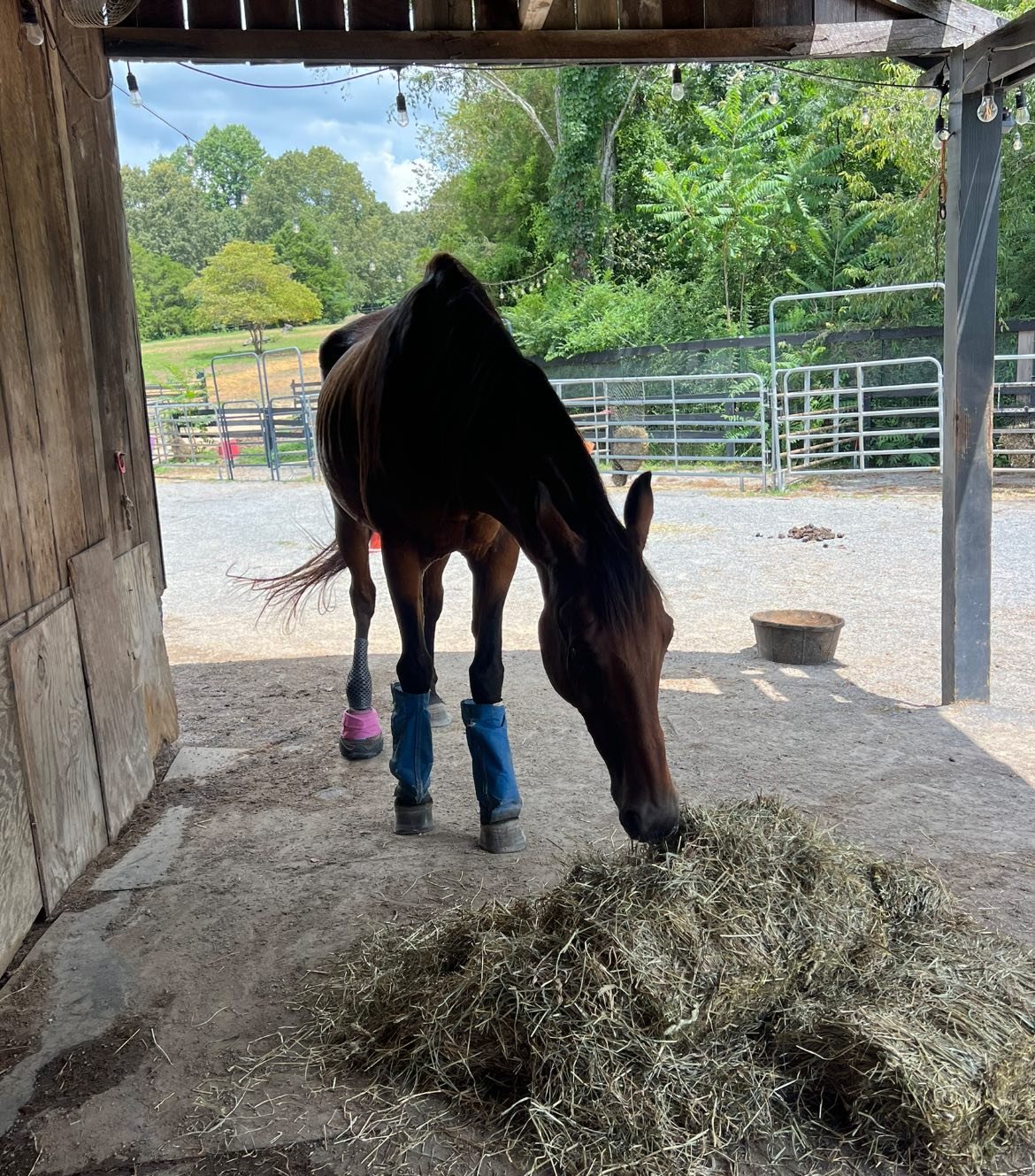Hoof Abscess 101
Let’s Talk About Hoof Abscesses
Mally recovering from a hoof abscess in his wrap and boot
My clients have been dealing with a lot of these lately with all of this wet weather, and we had one in my herd this week - so I wanted to share my favorite way to manage these monsters
When a horse comes in 3-legged lame it’s always scary… and the diagnosis options are pretty much:
It’s an abscess
Or the leg is broken
Or there is severe tendon or ligament damage
So it’s either no big deal or it’s a very very big deal cool cool cool…
Let’s see if we can make this less scary
Always call the vet if you’re not sure how to narrow it down or if you’re even remotely unsure about your assessment... But you can usually be pretty confident it’s an abscess if:
You can see an abscess tract in the hoof
There is no heat or swelling higher in the limb (but remember pastern and fetlock swelling is quite common with abscesses)
Joint range of motion in the limb is normal and not painful
Palpation of the limb is normal and not painful, no lacerations or other injuries present
(Side note: This is another reason I feel so strongly about teaching owners how to assess basic palpation and range of motion!!)
When treating an abscess I keep three things in mind:
Pain management - movement helps an abscess to resolve faster, but nsaids can slow the process down. Personally my preference is that if a horse is severely painful and struggling to move I give bute for a couple of days so they can walk more comfortably. If they’re walking around decently well once they’re wrapped and booted then I discontinue nsaids.
Keep it clean and protected - I like to do a poultice wrap and then stick them in a boot, I use Easyboot Clouds, some kind of poultice (I usually have that green epsom salt goo), and those hoof wrap stickers. That’s it. Takes 5 minutes.
Compression - this is the piece I think most folks miss. A compression wrap for the distal limb helps a ton with pain management and preventing complications. When a horse isn’t using a leg, swelling will pool and the lymphatic system can’t pump it out without use and movement. Compression helps the lymphatic system do its job more effectively.
When I poultice wrap and boot the hoof AND compression sleeve the distal limb AND keep the horse somewhere where they can move around freely but safely (I use my dry lot, not a stall) nine times out of ten I get it to drain out of the bottom of the foot instead of busting out of the hoof wall and we can resolve it in a few days.
No digging, no endless soaking, nothing fancy or expensive or excessively time consuming.
And remember - if you’re treating it as an abscess and you don’t see *any* improvements in comfort after a day or so of treating - you should still call the vet. It might take a few days to fully resolve, but they should NEVER be 3 legged lame hopping around for a week without a veterinary exam.

